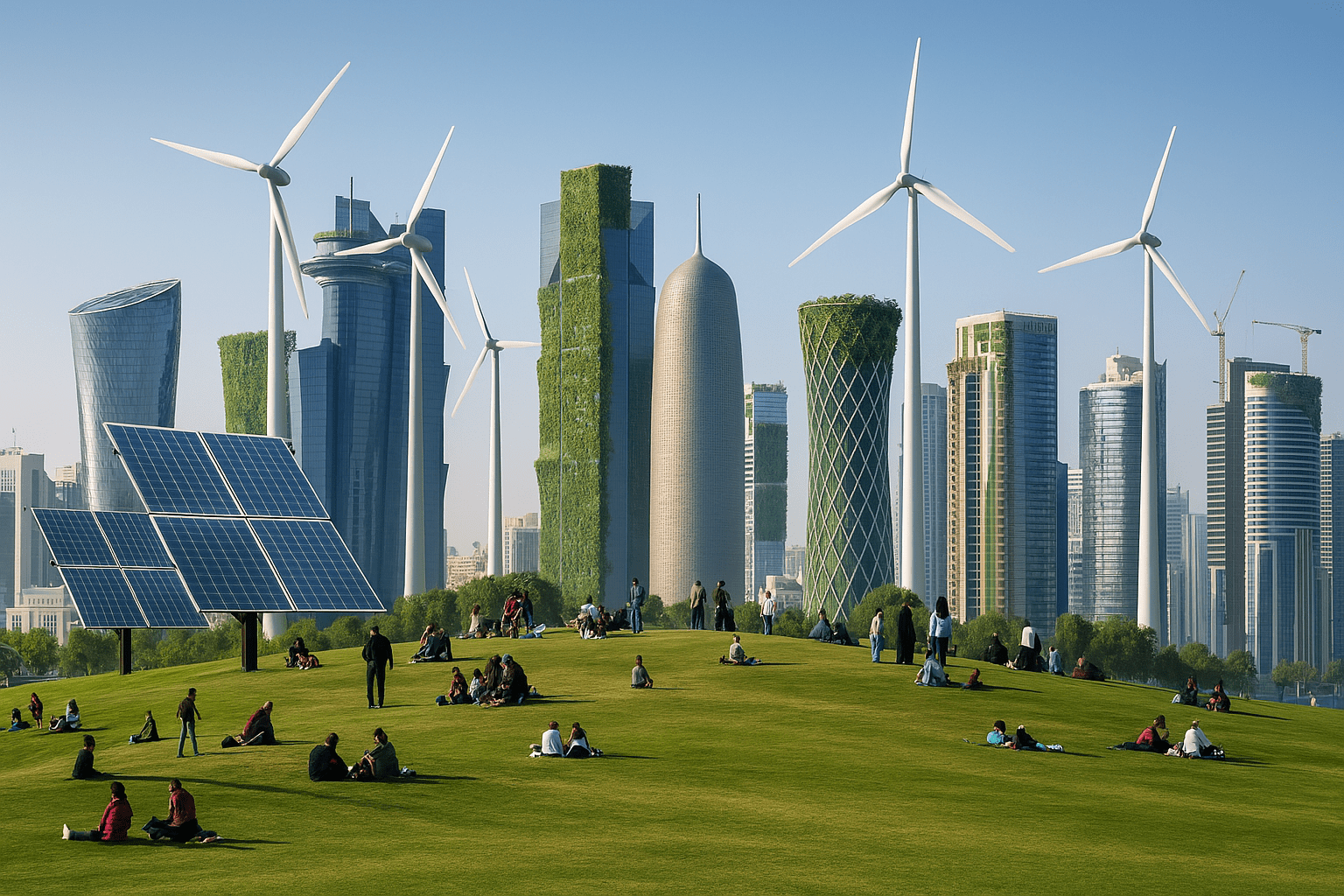Carbon Emissions Reduction Strategies for Qatar - Conclusion
April 2025
Conclusion
Qatar has sought to balance its developmental needs with its environmental protection goals. In the process, it has set an ambitious target of reducing greenhouse gas emissions by 25 percent (compared to business as usual) by 2030. Leveraging the deep knowledge and expertise present in the country, in September 2024, the Middle East Council on Global Affairs and Earthna: Center for a Sustainable Future organized a workshop for leading scholars and policy experts to explore the policy implications of Qatar’s developmental and environmental programs. The resulting policy briefs of this dossier summarize valuable insights to carbon emissions mitigation and reduction that align with Qatar’s National Vision 2030, its socio-economic context, and its environmental imperatives.
The contributors note that the substitution of carbon-intensive fuels by Qatar’s LNG exports initially contributed to reductions in global emissions. However, this offset may have declined since 2011, when demand for coal peaked. For Qatar to continue to contribute to global emissions reduction efforts, it needs to develop mitigation and diversification policies in a coordinated fashion across all sectors and in multiple dimensions. To achieve its ambitious decarbonization targets, Qatar can increase energy efficiency measures, expand its renewable energy projects, adopt carbon capture, utilization, and sequestration (CCUS) technologies, and introduce green financing instruments such as green bonds.
There is a unique international development dimension to Qatar’s emissions reduction efforts, borne out of its role as a major energy exporter. Qatar’s LNG production and expansion plans can continue to contribute to global emissions reductions by developing an export strategy that targets countries with a high share of coal in their energy mix and supporting LNG infrastructure development in energy poor countries that are poised to experience rapid economic growth. Qatar can also cultivate climate partnerships through technology transfers and targeted investments in the Global South.
In terms of clean energy, Qatar could work with international partners to advance the civilian use of nuclear technology, including SMRs, in areas such as food, health, and water. This can be done while being cognizant of the fact that deploying nuclear energy is politically challenging and requires strong regulations and safety measures across multiple domains. Additionally, hydrogen presents another promising avenue for Qatar’s clean energy push. However, given the challenges facing hydrogen production and supply chains globally, it makes sense for Qatar to wait for the hydrogen market to mature before investing heavily.
Qatar can benefit from continued investment in emerging low carbon technologies, as developing and scaling up such technologies like CCUS will require significant investments and international partnerships in research, development, and infrastructure. Moreover, investments in R&D on desalination could open a new pathway for Qatar to reduce emissions, especially if guided by long-term institutional commitments. Initially, this would require finding solutions for demand management and incentivizing private sector participation to develop and retain expertise. In the medium-to-long term, Qatar could benefit from an R&D strategy that streamlines the piloting and deployment of new desalination technologies.
Carbon markets also offer Qatar a strategic opportunity to reduce emissions, diversify its economy, and maintain international competitiveness by lowering overall costs and transferring clean technologies and green finance instruments. To leverage carbon markets for its decarbonization efforts, Qatar should define conditional and unconditional mitigation measures, pursue bilateral cooperation agreements, prepare for the aviation sector’s mandatory emissions offsetting program starting in 2027, strengthen regional cooperation regarding Article 6 implementation, and develop carbon credit purchase and equity funds to enhance the GCC’s influence in global carbon markets.
Qatar can become a leader in the regional and global energy transition if it successfully navigates certain challenges and adopts a more agile policymaking approach to decarbonization. Taken together, the contributions to this dossier provide a rich and nuanced analysis of policy alternatives that Qatar’s policymakers can leverage to both diversify their economy and achieve the country’s ambitious emissions reduction targets.



